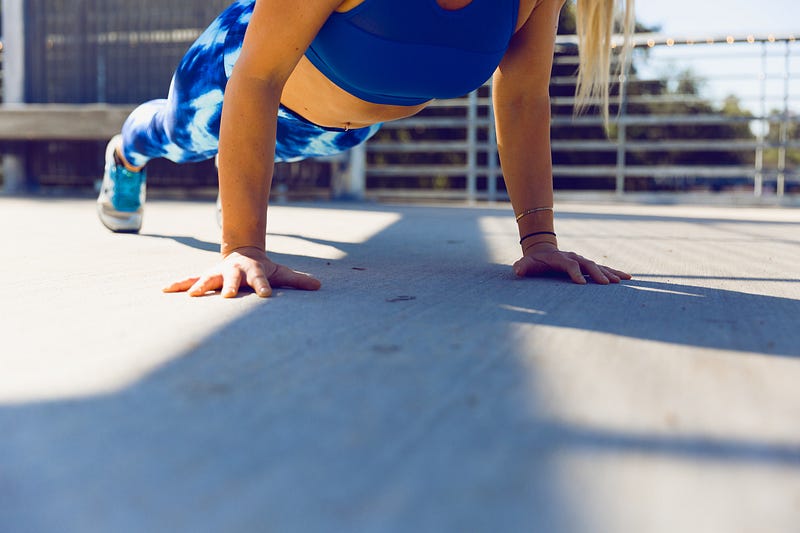Unlocking Your Running Potential: The Essential Side Plank
Written on
The Power of the Side Plank
Let's get straight to the point. When it comes to bodyweight exercises for runners—and indeed for anyone—the side plank stands out as a top choice. This exercise is particularly adept at revealing weaknesses in our bodies that often go unnoticed. By incorporating the side plank into your routine, you can enhance muscle activation, strength, and endurance in areas frequently overlooked by runners. If you aim to take your training to the next level, it’s time to integrate the side plank into your regimen.
> "If you could only choose one core exercise for life, this would be it." — Tim Keely, PT
Anatomical Insights into the Side Plank
As a Kinesiologist, I often emphasize the importance of core and glute activation for new clients. The side plank is a dual-action exercise that addresses both areas effectively. Given our sedentary lifestyles and typical running routines, it’s easy to neglect our stabilizing muscles. Below are four key muscle groups that benefit from this exercise, promoting strength, stability, and confidence.
Quadratus Lumborum
This muscle, shaped like a tent, attaches to the iliac crest and lumbar vertebrae. It is essential for respiration and lateral flexion of the spine. Strengthening the QL can help reduce lower back pain, although results may vary due to the complex nature of back pain.
External Obliques
Positioned on the sides of the abdominal wall, these muscles facilitate various movements, including lateral flexion and trunk rotation. They also assist in stabilizing the trunk while running, countering any shifts that may occur.
Gluteus Medius
This fan-shaped muscle located at the hip's back aids in thigh rotation and leg abduction. Strengthening the glute med is vital for improving walking and running efficiency as well as pelvic stability during weight-bearing activities.
Latissimus Dorsi
The largest muscle in the body, the Latissimus Dorsi plays a crucial role in shoulder stability and also acts as an accessory muscle for respiration and spinal support.
Mastering the Side Plank
Having covered the anatomy, let’s discuss key cues for executing this exercise correctly. The side plank may seem simple, but it requires focused attention to fully reap its benefits.

Key Techniques for Success
- Achieve Proper Alignment: Start by aligning your spine, extending the hips forward, and rotating them outward to create a straight line.
- Engage the Lats: As you lift yourself up, actively pull your elbow down, creating space between your ear and the stabilizing shoulder.
- Breathe Deeply: In isometric exercises, maintain diaphragmatic breathing to expand your rib cage rather than just lifting it.
- Maintain Focus: Avoid slumping or rotational misalignments as you tire. Pause to reset your form if necessary.
Avoid Overexertion
While it's tempting to overdo a new exercise, it's important to pace yourself and use progressions thoughtfully. If you experience pain, consult a health professional for guidance on alternative exercises.
Modifications for the Side Plank
The side plank can be adapted for various fitness levels. You can perform it on your elbow or hand, depending on what feels comfortable for you.
- Easier Version: Start on your knees instead of your toes.
- Advanced Options: Consider adding a leg lift, a crunch, or a dumbbell lateral raise for added complexity. You can even use a yoga ball to challenge your stability.
Increasing your hold time is also an effective way to enhance endurance.

In Conclusion
If you find yourself short on time or equipment, don’t worry—there are plenty of effective bodyweight exercises at your disposal. Regardless of whether you're a novice runner or a seasoned athlete, the side plank is an essential addition to your fitness routine. Its benefits are undeniable.
It’s time to confront our weaknesses and transform them into strengths. Focus on functional training rather than just aesthetic muscles, as the stabilizers play a crucial role in our daily lives and deserve attention too.
Before you lace up for your next run, try holding a side plank for 30 seconds!
Learn the 5 Best Bodyweight Strength Exercises for Runners in this video, which focuses on essential movements to enhance your running performance.
Join this 20-Minute Bodyweight Strength Workout designed specifically for runners, brought to you by Sweat With SELF.